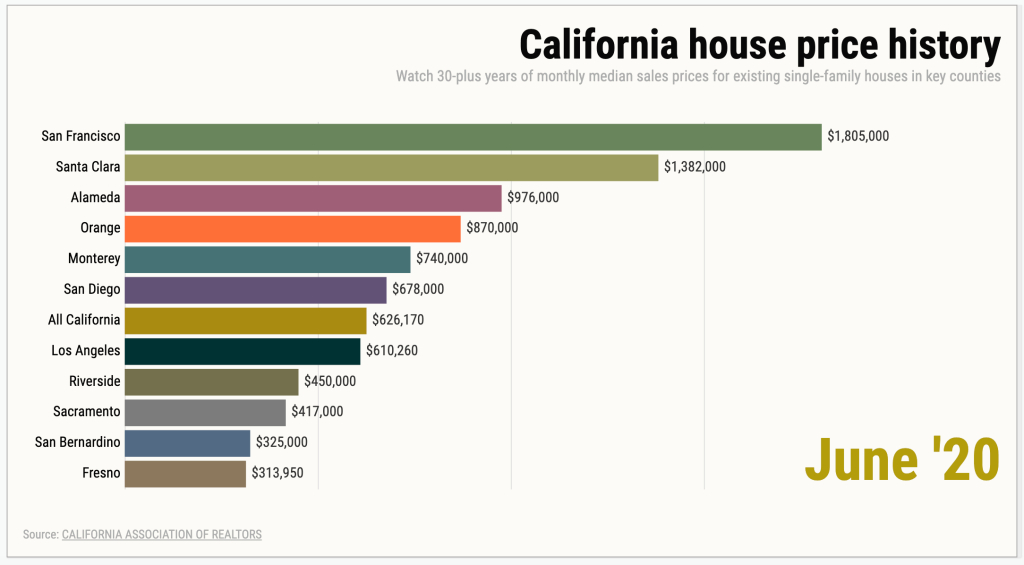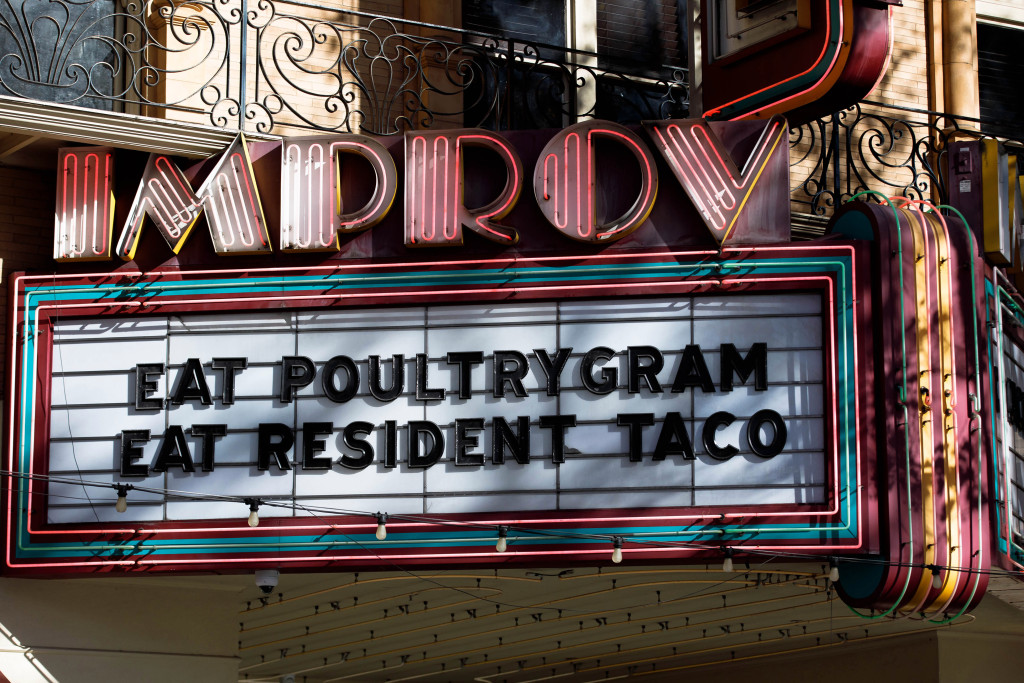Editor’s note: Take a moment to watch the data illustration above that tracks 30 years of California home-price changes.
It’s different this time.
That’s what we’re told about real estate’s noteworthy resilience, which kept housing from falling into the pandemic economic’s quagmire and instead pushed California home prices to a record high in June.
Yet my trusty spreadsheet, filled with three decades of home price data compiled by the California Association of Realtors, suggests it’s actually more of the same: A continuing upswing in a market filled with ups and downs.
Two things likely contributed to the 2020 home price frenzy. Historically low mortgage rates and motivated buyers who were lucky enough to keep their jobs.
Despite an economy ravaged by “stay at home” orders, California’s median selling price for existing single-family houses rose 8% to $626,170 from February to June, topping the previous high set in August 2019. It’s the sixth time in 26 months a new record has been set. To be fair, let’s note that before May 2018, the state record sat at its bubble era’s peak for 11 years.
These stats also show 15 counties — Alameda, Butte, Contra-Costa, Fresno, Madera, Marin, Orange, Riverside, Sacramento, San Diego, San Francisco, Solano, Sutter, Tulare and Yuba — also are touching new highs in 2020’s first six months.
Now, let me say that record high prices don’t necessarily mean an imminent collapse. However, three decades of price history reminds us of California’s housing market’s boom-or-bust trends. These cycles usually parallel job market gyrations with the ever-present backdrop of falling mortgage rates.
Ups and downs
Let’s start with 1990 to 1996, a lengthy period of economic malaise and real estate indifference.
Everything from the collapse of the housing-friendly lenders from the savings and loan industry to a mild national recession to the cratering of the state’s aerospace industry made for an extended economic morass in California.
There was no dramatic plunge for housing. Rather, it was a slow and long decline that added up to a 10% drop in the statewide median over seven years. That depreciation averaged 1.5% annually in an era where 30-year, fixed mortgage rates dropped sharply to 7.6% from 9.8%.
What followed in 1997 to 2006 can be best described as a recovery that turned ridiculous. And I’m being kind.
The energy created by a real estate rebound — amplifying a technology-driven boom — even ignored the national fallout from the dot-com crash of the early 2000s. But that resilience eventually turned into overheated buying and lending.
Amid the mania, the statewide median more than tripled over 10 years. That’s a stunning 12.7% average annual gain — perhaps ballooned by another steep mortgage rate drop to 6.1% from 7.6%.
What happened next, in 2007-11, was horrifically painful. The previous “it’s different this time” bubble shattered into the Great Recession.
An over-enthusiastic industry had made homebuying (and borrowing) too easy. Owners couldn’t afford what they bought, lenders didn’t get paid and next we knew the global financial system was pushed to the brink.
Almost unfathomable fallout followed. The California median fell 51% (yes, values were cut in half) over five years. That’s an annualized 13.2% in average losses — even after rates collapsed to 4% from 6.1%.
Virus era
For a while, any recovery from the bubble disaster seemed like a dream scenario. So, hopefully there’s some gratefulness about the economic and housing rebound that has since emerged.
And a revived economy powered a significant housing reversal.
Since 2012, the statewide median has more than doubled. Over this 8.5 years through the current upswing, that’s 10.3% average annualized appreciation — yes, approaching the bubble era’s yearly gains. This comes as rates fell to 3.3% in June from 4% as the turnabout began.
Before the virus era began in late winter, the state’s economy was surging as unemployment hit a record low. Within weeks, the pandemic resulted in record-shattering job losses. For housing, sales activity initially slowed but pricing remained firm.
Please note the coronavirus has no significant cures to date — other than much-debated economic limitations that will surely impact the housing market. And don’t overlook the question of how long cheap money, a housing salve engineered by the Federal Reserve, can prop up the market.
The California median price has grown by an eye-catching 221% since 1990. Most of that gain can be attributed to mortgage rates falling to under 3% this summer from nearly 10%. Over these three decades, my spreadsheet tells me a hypothetical buyer who paid the statewide median price saw monthly house payments increase by only 64%.
Or consider a short-term view. Historically cheap loans made a California buyer’s payments drop by 7.5% in the past year. Yes, that is cheaper housing.
It’s no economic miracle or real estate magic. It’s a homebuyer’s discount, courtesy of the Fed.










